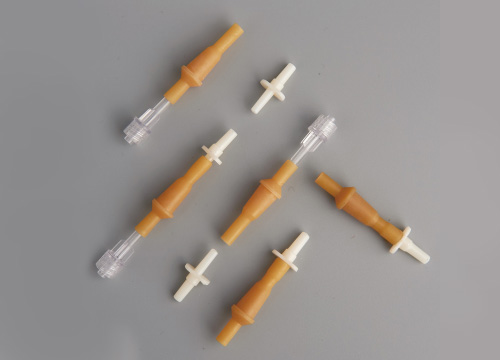

Syringe medicine packaging can reduce the waste caused […]
Syringe medicine packaging can reduce the waste caused by the absorption of medicines during storage and transfer.
The increase in the use of syringe drug packaging has attracted more and more manufacturers and prompted them to optimize production processes to improve production efficiency and reduce production costs; however, under the premise of rapid development, we must also pay attention to syringe drugs The quality of the packaged product.
Syringe drug packaging has the characteristics of convenient and quick use, no pollution in the whole process, and cost saving, and is widely used. While continuously improving the process and increasing production efficiency, manufacturers are also paying attention to the physical testing indicators of syringe drug packaging. The slidability of the rubber piston of the syringe drug packaging is one of them. The piston uses the push rod to generate resistance during the travel of the inner wall of the glass needle tube, and detects its use and starts to push the push rod. Use a certain speed (dose speed) to push the piston to the needle tube. The force value produced during the bottom stop (dose completion). In actual use, if the force is too large, it will cause difficulty in injection, and if the force is too small, the injection will be too fast or too strong and cause danger.
The medical pre-filled plastic injector component is composed of a needle tube, a cap, a push rod or a piston, and each plastic component is produced by an injection molding process. Prefilled syringes are generally sterilized with ethylene oxide. Ethylene oxide will produce residue after sterilization, and the residual amount of ethylene oxide should be ≤1µg/ml before the product can be used.

Detection method of ethylene oxide residue:
Sample preparation: Take this product out of packaging, suck in distilled water with the marked volume (V), and equilibrate at 37°C ± 1°C for 1 hour.
Preparation of control stock solution: Take a 50ml volumetric flask which is externally dry, add 30ml of water, add a stopper, and weigh to the nearest 0.1mg. Use a syringe to inject 0.6ml of ethylene oxide reference substance (purity greater than 99.7%), shake it gently, then close the stopper, and weigh. The difference between the two weighings is the weight of ethylene oxide. Add water to the mark and dilute this solution to 1g/L as a control stock solution. Dilute it into a solution with an ethylene oxide content of 1 µg/ml as a control solution.
Take 5ml of each of the control solution and the sample and put them in the headspace bottle, and place them at 60℃±1℃ for 20 minutes. Inject 1ml of the overhead gas into the gas chromatograph, record the chromatogram, and measure the peak area of the reference substance and the sample. The peak area of the control solution should be greater than the peak area of the sample.
https://www.syringeassemblymachines.com/